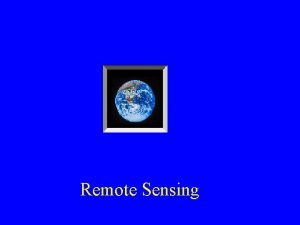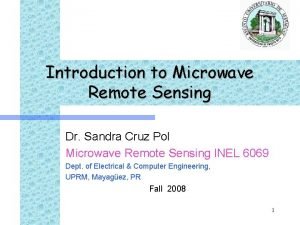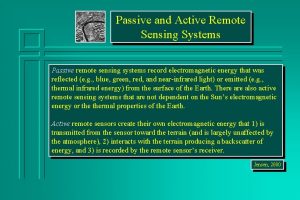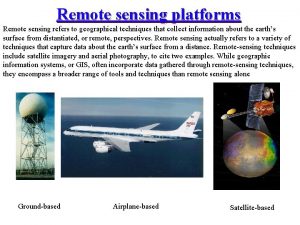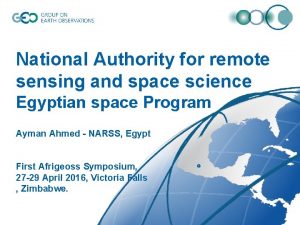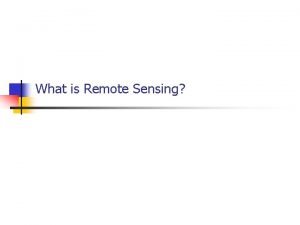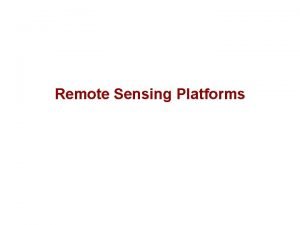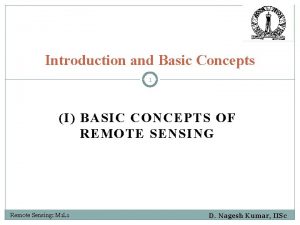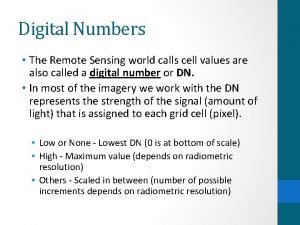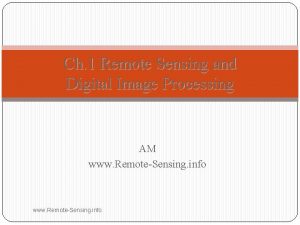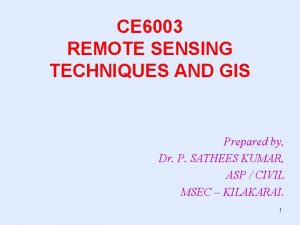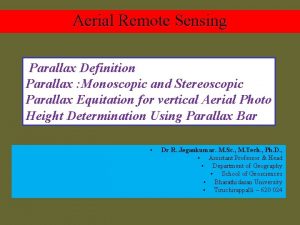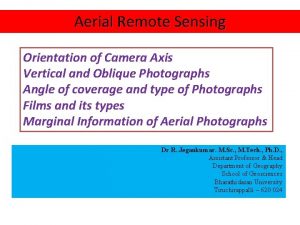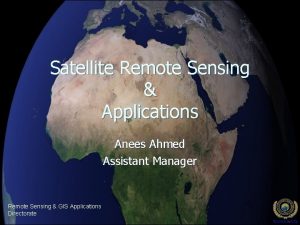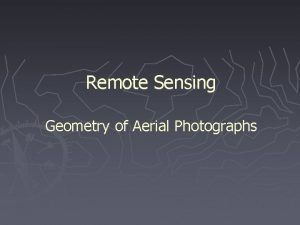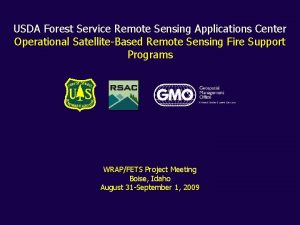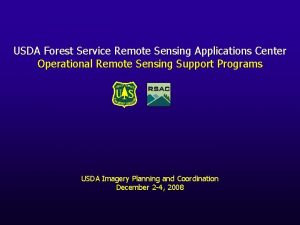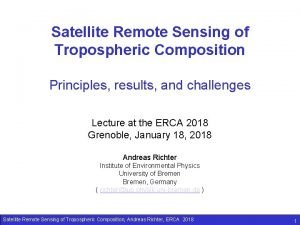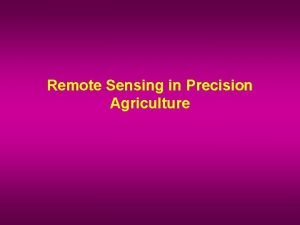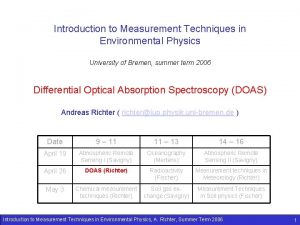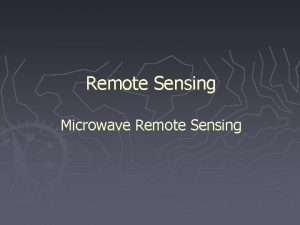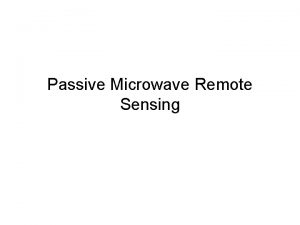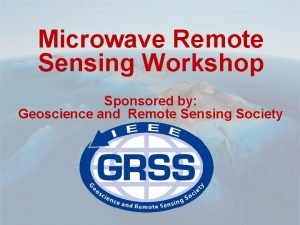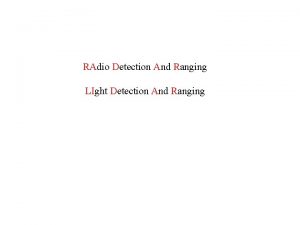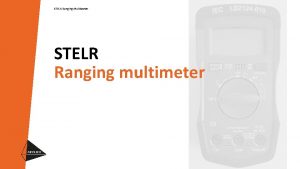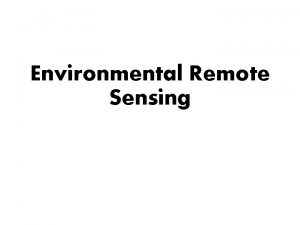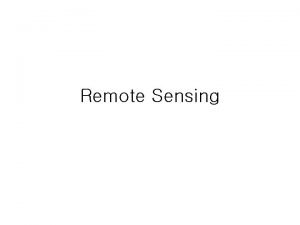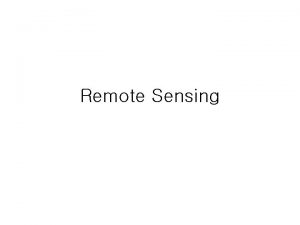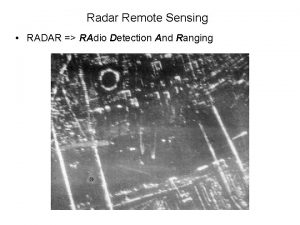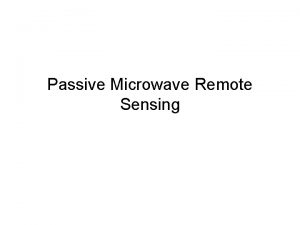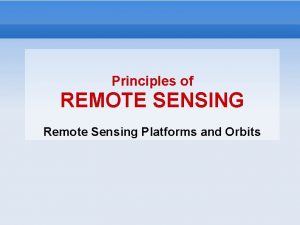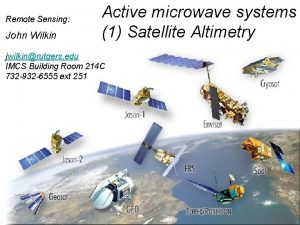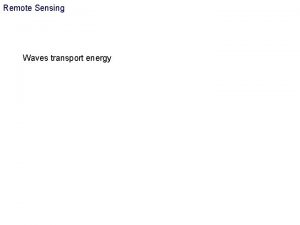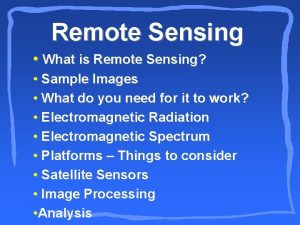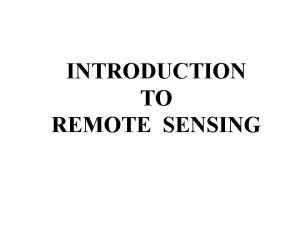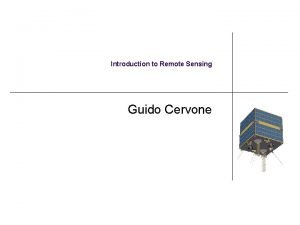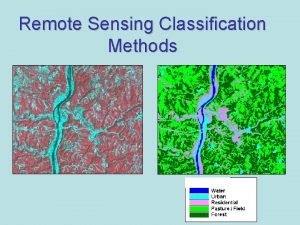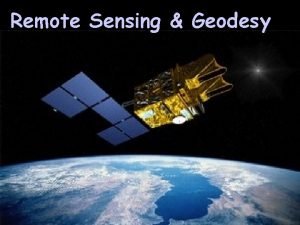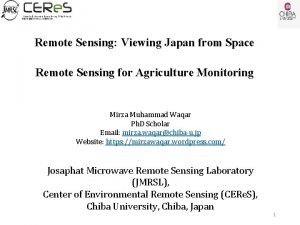Active Microwave Remote Sensing RadarRadio Detection and Ranging
























- Slides: 24

Active Microwave Remote Sensing

Radar=Radio Detection and Ranging Radar system components

Radar: How it Works • A directed beam of microwave pulses are transmitted from an antenna • The energy interacts with the terrain and is scattered • The backscattered microwave energy is measured by the antenna • Radar determines the direction and distance of the target from the instrument as well as the backscattering properties of the target

Radar Parameters • Azimuth Direction – direction of travel of aircraft or orbital track of satellite • Range angle – direction of radar illumination, usually perpendicular to azimuth direction • Depression angle – angle between horizontal plane and microwave pulse (near range depression angle > far range depression angle) • Incident angle – angle between microwave pulse and a line perpendicular to the local surface slope • Polarization – linearly polarized microwave energy emitted/received by the sensor (HH, VV, HV, VH)

Radar Nomenclature • Nadir • azimuth flight direction • look direction • range (near and far) • depression angle ( ) • incidence angle ( ) • altitude above-ground-level, H • polarization


Slant Range vs. Ground Range

Radar Pulse Length

Synthetic Aperture Radar • Antenna “length” is increased synthetically by building up a history of backscattered signals from the landscape along the track of the sensor • Implemented by keeping track of the Doppler shift of the reflected signal (frequency of the transmitted signal is known)

Layover occurs when the incidence angle ( ) is smaller than the foreslope (a + ) i. e. , < a+. This distortion cannot be corrected!


Radar Shadowing Radar shadowing can be useful for interpreting geomorphological features

Radar Backscatter Power received = Power per unit area at target x x Effective scattering area of the target Spreading loss of reradiated signal Effective receiving area of antenna x

Radar Backscatter Coefficient The efficiency the terrain to reflect the radar pulse is termed the “radar cross-section”, The radar cross-section per unit area, (A) is called the “radar backscatter coefficient” ( ˚) and is computed as : The radar backscatter coefficient determines the percentage of electro- magnetic energy reflected back to the radar from within a radar pixel This is similar to the reflectance in optical remote sensing

Radar Backscattering

Radar Backscattering Depends on the properties of the target: – roughness – dielectric constant Depends on characteristics of the radar: – depression angle – frequency/wavelength – polarization

Rayleigh Criterion for Roughness • A surface is considered smooth at or below a height, h, if: [ cm ] h = the vertical relief (average height of surface irregularities) = the radar wavelength (measured in cm) g = the depression angle

Surface Roughness in RADAR Imagery

Nile River Sudan Space Shuttle Color. Infrared Photograph SIR-C Color Composite: • Red = C-band HV • Green = L-band HV • Blue = L-band HH C-band, = 6 cm L-band, = 24 cm

Radar and the Dielectric Constant • Dielectric constant depends on the type of material as well as its moisture state – it is analogous to the refractive index of the material – it is primarily a function of moisture content – also depends on chemical properties such as salinity • Dielectric constant is the ratio of the capacitance of a material to that of a vacuum. Also known as the “relative permittivity”

Dielectric Constant dielectric constant of liquid water is 80; dry soil is 2 -4.

Radar frequency and backscatter • Depth of radar penetration through the vegetation canopy varies directly with

Types of Active Microwave Surface and Volume Scattering that Take Place in a Hypothetical Pine Forest Stand

Response of A Pine Forest Stand to X-, C- and L-band Microwave Energy
 Microwave remote sensing lecture notes
Microwave remote sensing lecture notes Introduction to microwave remote sensing
Introduction to microwave remote sensing Active passive remote sensing
Active passive remote sensing Ifov and fov in remote sensing
Ifov and fov in remote sensing National authority for remote sensing and space sciences
National authority for remote sensing and space sciences N-rays
N-rays Remote sensing platforms
Remote sensing platforms Ideal remote sensing system
Ideal remote sensing system Digital number in remote sensing
Digital number in remote sensing Limitations of remote sensing
Limitations of remote sensing Idealized remote sensing system
Idealized remote sensing system Aggregation ap human geography
Aggregation ap human geography Aggregation ap human geography
Aggregation ap human geography Monoscopic definition
Monoscopic definition Strip camera in remote sensing
Strip camera in remote sensing Remote sensing image
Remote sensing image Fiducial marks in remote sensing
Fiducial marks in remote sensing Canadian centre for remote sensing
Canadian centre for remote sensing Gis definition ap human geography
Gis definition ap human geography Remote sensing applications center
Remote sensing applications center Remote sensing applications center
Remote sensing applications center Remote sensing physics
Remote sensing physics Remote sensing in precision agriculture
Remote sensing in precision agriculture Aerial photography in remote sensing pdf
Aerial photography in remote sensing pdf Remote sensing physics
Remote sensing physics
